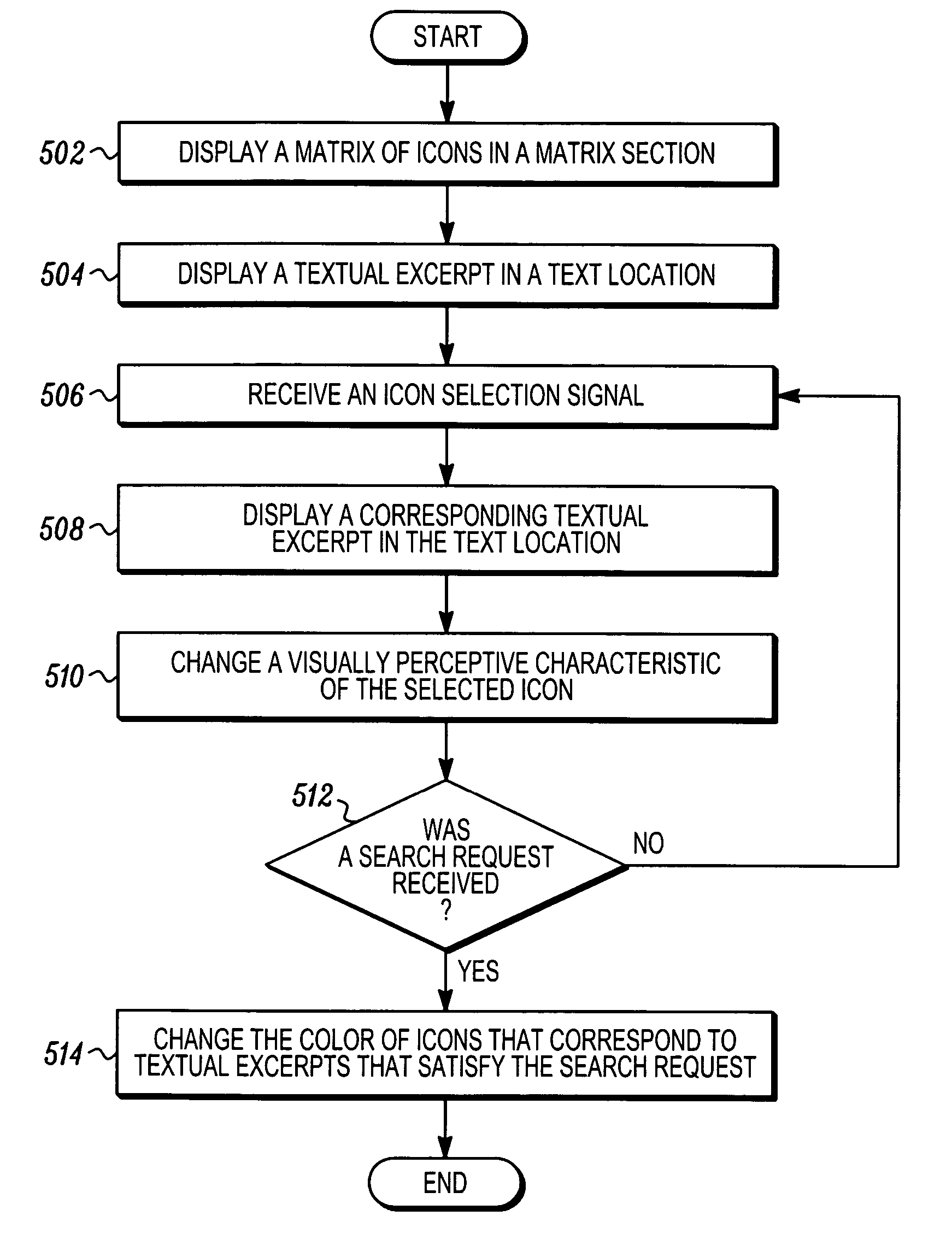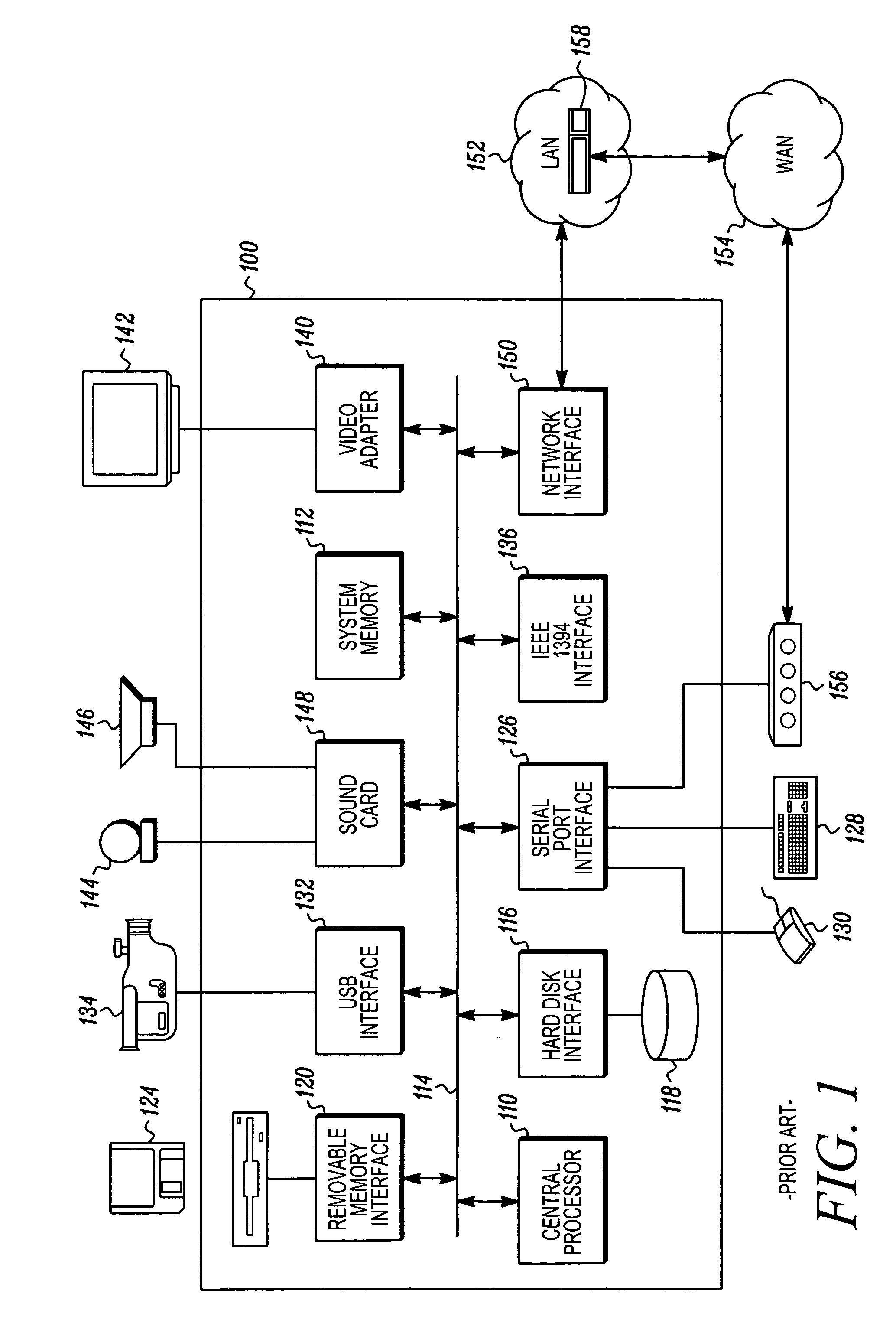Context-based display technique with hierarchical display format
a display format and context-based technology, applied in the field of user interfaces, can solve the problems of user difficulty in quickly obtaining information relating to the content stored in the database, user difficulty in knowing how the particular elements are distributed within the database, and time-consuming search process, etc., to achieve rapid and quickly viewing and searching a database
- Summary
- Abstract
- Description
- Claims
- Application Information
AI Technical Summary
Benefits of technology
Problems solved by technology
Method used
Image
Examples
first embodiment
[0046]A compilation translator 214 retrieves excerpts from excerpt database 210 and creates a large file or files containing a large number of excerpts. In the invention, compilation translator 214 creates a C++ library file that essentially contains a data structure of a large number of excerpts. The use of the resulting library file will be described in detail below.
[0047]Next, a compiler / linker 216 receives a library file created by translator 214 and source code 218. Compiler / linker 216 may be installed on a computer (not shown) and the computer may be programmed to retrieve the library file in response to a command from a user or without a command from the user. Source code 218 may be a C++ program that contains computer executable instructions for creating a matrix database. Source code 218 may be configured to operate with a variety of different library files so that the configuration of source code 218 is independent of the library file created by translator 214. Compiler / li...
second embodiment
[0076]FIG. 8 illustrates a system in accordance with the present invention. A network movie database 802 is provided via a communication network (not shown) which may comprise a public network such as the Internet or World Wide Web. It is understood that a different type of communication network, such as a private network like an intranet, could be equally employed where the database (regardless of its content) resides within a private network. Further still, a combination of public and private network elements may be employed as necessary. Regardless, an example of the network movie database 802 is the so-called Internet Movie Database (IMDB; available at http: / / www.imdb.com). Preferably, the network movie database 802 (or any other type database to be used) comprises a content-rich source of information regardless of the particular structure or format of the database. A single network movie database 802 is shown for illustration purposes only. The present invention may be used wit...
PUM
 Login to View More
Login to View More Abstract
Description
Claims
Application Information
 Login to View More
Login to View More - R&D
- Intellectual Property
- Life Sciences
- Materials
- Tech Scout
- Unparalleled Data Quality
- Higher Quality Content
- 60% Fewer Hallucinations
Browse by: Latest US Patents, China's latest patents, Technical Efficacy Thesaurus, Application Domain, Technology Topic, Popular Technical Reports.
© 2025 PatSnap. All rights reserved.Legal|Privacy policy|Modern Slavery Act Transparency Statement|Sitemap|About US| Contact US: help@patsnap.com



